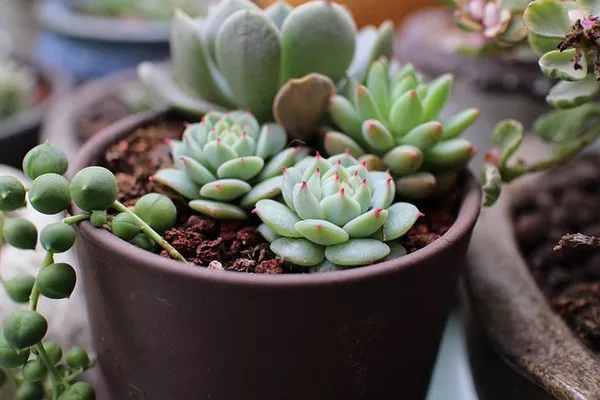Succulents have surged in popularity in recent years, captivating both novice and experienced gardeners with their unique shapes, vibrant colors, and low-maintenance nature. While their striking foliage is often the main attraction, many succulents also surprise enthusiasts with their stunning blooms. From delicate clusters of tiny flowers to bold, show-stopping blossoms, the world of flowering succulents offers a diverse array of choices for gardeners looking to add a touch of beauty to their indoor or outdoor spaces.
In this comprehensive guide, we delve into the fascinating realm of flowering succulents, exploring the varieties that produce blooms and offering insights into their cultivation, care, and aesthetic appeal.
Understanding Flowering Succulents
Succulents, characterized by their ability to store water in their leaves, stems, or roots, are found in various habitats around the world, from arid deserts to lush tropical forests. While not all succulents bloom, many species do, often producing flowers that are as intriguing and diverse as their foliage.
The process of succulent flowering is influenced by factors such as environmental conditions, species genetics, and plant maturity. Generally, succulents require specific conditions, including adequate sunlight, well-draining soil, and proper watering, to initiate and sustain blooming.
Popular Flowering Succulents: A Closer Look
1. Echeveria (Echeveria spp.): Echeverias are among the most beloved succulents, prized for their rosette-shaped foliage and stunning flowers. These plants typically produce bell-shaped blooms in shades of pink, red, orange, or yellow, adding a burst of color to gardens, containers, and floral arrangements.
2. Sempervivum (Sempervivum spp.): Commonly known as hens and chicks, Sempervivums are hardy succulents known for their clustering habit and striking, star-shaped flowers. These plants thrive in rocky, well-draining soil and are prized for their ability to withstand harsh conditions while still producing charming blooms.
3. Aloe (Aloe spp.): Aloe plants are renowned for their medicinal properties as well as their striking appearance. While the spiky leaves are the main attraction, aloes also produce tall stalks adorned with tubular flowers in hues ranging from vibrant orange to soft yellow.
4. Kalanchoe (Kalanchoe spp.): Kalanchoes are popular flowering succulents valued for their long-lasting blooms and easy care requirements. These plants produce clusters of small, colorful flowers in shades of red, pink, orange, or yellow, often creating a striking contrast against their fleshy green leaves.
5. Crassula (Crassula spp.): Crassulas encompass a diverse group of succulents, ranging from compact rosettes to sprawling shrubs. Many species within this genus produce delicate, star-shaped flowers that emerge in clusters, adding a touch of elegance to their architectural foliage.
Factors Influencing Succulent Flowering
While succulents are renowned for their resilience, several factors can impact their ability to bloom:
1. Light: Adequate sunlight is crucial for triggering flowering in many succulent species. Most flowering succulents require bright, indirect light to thrive, although some varieties may tolerate partial shade.
2. Temperature: Succulents often originate from regions with warm daytime temperatures and cooler nights. Fluctuations in temperature, particularly during the growing season, can stimulate flowering in many species.
3. Watering: Proper watering is essential for succulent health and blooming. While these plants are adapted to dry conditions, they still require occasional watering to support flower production. However, overwatering can lead to root rot and inhibit blooming.
4. Soil: Well-draining soil is critical for preventing waterlogged roots and ensuring healthy succulent growth. Aeration and proper drainage facilitate root development and support the plant’s ability to absorb nutrients essential for flowering.
5. Nutrition: Succulents have modest nutritional needs, but they still require essential nutrients to support growth and flowering. Fertilizing sparingly during the growing season can provide the necessary nutrients without overwhelming the plant.
Cultivating Flowering Succulents: Tips for Success
Whether you’re a seasoned succulent enthusiast or a beginner gardener, cultivating flowering succulents can be a rewarding experience. Here are some tips to help you succeed:
1. Choose the Right Species: Select succulent species known for their prolific blooming habits and suitability to your climate and growing conditions.
2. Provide Adequate Light: Position your succulents in a location where they receive plenty of bright, indirect sunlight. South-facing windows are ideal for indoor plants, while outdoor succulents may benefit from partial shade in hotter climates.
3. Monitor Watering: Avoid overwatering your succulents, as this can lead to root rot and inhibit blooming. Instead, water sparingly, allowing the soil to dry out between waterings.
4. Use Well-Draining Soil: Plant your succulents in a well-draining potting mix formulated specifically for cacti and succulents. This will prevent water from accumulating around the roots and promote healthy growth.
5. Provide Proper Ventilation: Good airflow is essential for succulent health and blooming. Ensure adequate ventilation around your plants, particularly if grown indoors, to prevent issues such as fungal diseases and pests.
6. Fertilize Sparingly: Use a balanced, diluted fertilizer formulated for succulents to provide essential nutrients during the growing season. Apply fertilizer sparingly, following the manufacturer’s instructions to avoid overfeeding.
7. Prune as Needed: Remove spent flowers and dead foliage to encourage new growth and prolong the blooming period. Pruning also helps maintain the plant’s shape and appearance.
Conclusion
Flowering succulents offer a delightful fusion of beauty and resilience, making them a popular choice for gardeners seeking low-maintenance yet visually striking plants. From the iconic rosettes of Echeverias to the architectural elegance of Aloes, the world of flowering succulents is as diverse as it is enchanting.
By understanding the factors that influence succulent flowering and providing the proper care and cultivation practices, enthusiasts can enjoy a continuous display of blooms year-round. Whether adorning windowsills, terrariums, or garden beds, flowering succulents bring a touch of natural elegance to any space, inviting admiration and appreciation from all who encounter them.


